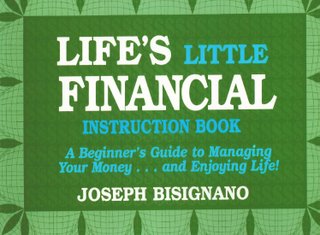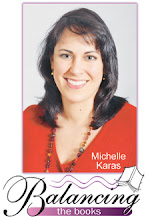Teacher shares practical lessons about money that reach beyond the classroom

Reviewed: “Life’s Little Financial Instruction Book: A Beginner’s Guide to Managing Your Money … and Enjoying Life!,” by Joseph Bisignano, Firebird Press, a division of Pelican Publishing Co., 2006, $7.95, 93 pages.
Joseph Bisignano, author of “Life’s Little Financial Instruction Book,” is a high school business teacher.
His no-nonsense little guide, easily read in one short sitting, talks about money and big-money decisions we face in life.
Bisignano’s Italian father told him never to trusts banks, that that “La banca ti mangia” — “The bank will eat you alive.”
The elder Bisignano, an Italian immigrant, never took out a loan, mortgaged a house or applied for a credit card.
But the author isn’t advocating such extremes. Just a little prudence.
“Many people live from day to day and from paycheck to paycheck, just getting by. Personally, I can’t live that way,” he writes in the introduction. “I can’t stand being indebted to people, other businesses or banks. And I will do anything to stay out of those situations.”
On the topic of credit cards, Bisignano suggest finding one without an annual fee and pay off your balance every month. That way, you’ll eliminate the costs of the convenience and won’t incur a finance charge. He recommends using one card only so you have only one bill to pay per month, thus saving postage (I guess his advice predates online payment). Make that one card “help” you by participating in cash back or rewards bonuses that can help you buy a new car or other items.Housing is another area where it pays to be pragmatic, Bisignano says.
When you rent, you are paying someone else’s mortgage. When you own, you are paying yourself. That’s not Bisignano’s advice — it’s mine. But he concurs, rather passionately.
“Paying rent is like taking money out of your wallet and setting it on fire! You will never gain anything from it, and you will never get that money back,” he writes.
He acknowledges reasons why some people must rent and encourages them to start saving for a downpayment on a house.
Once you own, the ideal situation is to rent out a portion of your property and have the renter pay part of your mortgage. But that’s not ideal for everyone, he says.
Bisignano gives a brief overview of mortgages and encourages homeowners to put at least 10 percent of the property cost down and take as short of a term as possible — advocating a 15-year loan over a 30-year. That might cost more in the form of a monthly mortgage payment but will save several thousands in interest.
On the topic of savings, Bisignano encourages picking up overtime at your job to earn more money for savings. (This is the part where I, a salaried employee, laugh bitterly.)
When selecting a financial institution to open a savings or other investment vehicle, Bisignano recommends shopping around until you find a bank that offers free checking with no minimum balance. He advocates buying U.S. Savings Bonds and CDs, paying yourself using Individual Retirement Accounts and participating in your company’s 401k plans, if possible.
The advice in Bisignano’s little book is simple and apropos for those of us who may not have learned our financial lessons from frugal dads, like he did. The upstate New York business teacher has put down on paper a few practical lessons that reach beyond his classroom into the real world.
Labels: Joseph Bisignano, Life’s Little Financial Instruction Book: A Beginner’s Guide to Managing Your Money … and Enjoying Life, ” book review
 RSS
RSS


